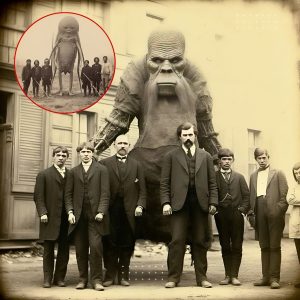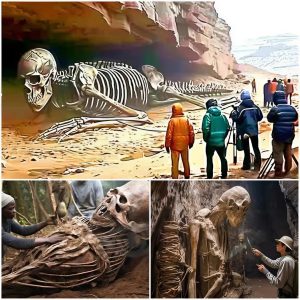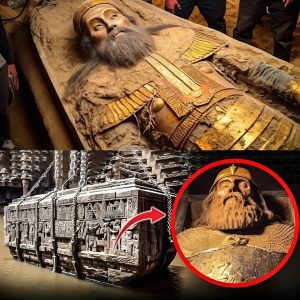Archaeologists Discover Massive Skeleton in Romania: A Glimpse into Ancient Giants

In a groundbreaking discovery that has captivated the archaeological community and the public alike, archaeologists in Romania have uncovered a massive skeleton. This find, shrouded in mystery and intrigue, promises to shed new light on the ancient history of the region and potentially rewrite our understanding of human evolution and prehistoric life.
The Discovery
The skeleton was unearthed during an excavation in the Romanian countryside, a site known for its rich historical significance. The archaeological team, led by Dr. Elena Petrescu, stumbled upon the remains while investigating a series of ancient burial mounds. What they found exceeded all expectations—a skeleton of unprecedented size, suggesting the existence of a giant humanoid species.
Initial Analysis
Preliminary analysis indicates that the skeleton measures over 8 feet in height, far surpassing the average human stature. The bones are remarkably well-preserved, allowing scientists to conduct detailed examinations. Radiocarbon dating places the remains at approximately 5,000 years old, aligning them with the Neolithic period. This era, marked by the advent of agriculture and the rise of early civilizations, is already a subject of intense study. The discovery of such a large skeleton from this period raises intriguing questions about the diversity and adaptability of ancient human populations.
Historical and Mythological Context
Romania is a land steeped in history and folklore. Legends of giants are prevalent in many cultures, including those of the Carpathian region. These myths often speak of towering beings with extraordinary strength, living in harmony with or in opposition to humans. The discovery of a massive skeleton lends a new layer of credibility to these ancient tales, suggesting that they may have roots in actual historical events or encounters.
Scientific Implications
The scientific community is abuzz with the potential implications of this discovery. If further analysis confirms the existence of a previously unknown humanoid species, it could revolutionize our understanding of human evolution. The size and structure of the skeleton suggest significant variations in anatomy and physiology, prompting researchers to re-evaluate theories about the adaptability and diversity of ancient human species.
Next Steps in Research
The excavation site has been secured, and a comprehensive investigation is underway. Researchers are meticulously cataloging the find, conducting DNA analysis, and examining the surrounding area for additional clues. Comparative studies with other skeletal remains from the same period will be crucial in determining the relationship between this giant skeleton and known human species.
Dr. Petrescu and her team are collaborating with international experts in anthropology, paleontology, and archaeology to ensure a thorough and multidisciplinary approach. Their goal is not only to understand the origins and lifestyle of this ancient giant but also to explore its potential impact on the broader narrative of human history.
Public Fascination and Speculation
News of the discovery has sparked widespread interest and speculation. Social media is rife with theories, ranging from the plausible to the fantastical. While some suggest that the skeleton belongs to an ancient warrior or chieftain, others propose more outlandish ideas, including connections to extraterrestrial visitors or lost civilizations.
The fascination with giants is deeply ingrained in the human psyche, and this discovery taps into that collective curiosity. As scientists work to separate fact from fiction, the public’s imagination runs wild, highlighting the enduring allure of archaeology and the mysteries of our past.
Conclusion: A New Chapter in Archaeological Exploration
The unearthing of a massive skeleton in Romania marks a significant milestone in archaeological research. It challenges existing paradigms and invites us to reconsider the complexities of our ancient ancestors. As the investigation progresses, the world eagerly awaits more information about this enigmatic giant and its place in the tapestry of human history.
This discovery not only enhances our understanding of the past but also underscores the importance of ongoing exploration and curiosity. In the words of Dr. Petrescu, “Each excavation is a journey into the unknown, a chance to uncover the hidden stories of those who came before us. This find is a reminder of how much there is still to learn and discover.”





